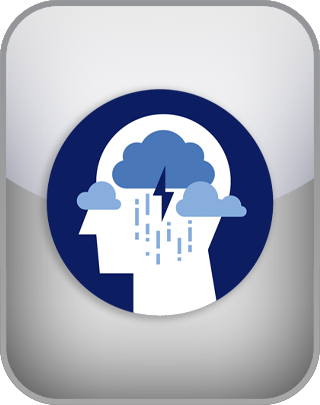Dysthymic Spectrum Test
The dysthymic spectrum encompasses a range of traits characterized by persistent low-grade depressive tendencies, including chronic sadness, low energy, and reduced motivation. There is considerable variation in the type and intensity of these traits.
This test combines insights from prior research on dysthymic temperament to provide a single, composite test for measuring dysthymic tendencies across 8 different domains.
Where do you fall on the dysthymic spectrum? For each of the following questions, indicate your level of agreement below.
Question 1 of 40
I find it hard to make decisions.
| Disagree | Agree |
NEXT
The IDRlabs Dysthymic Spectrum Test (IDR-DTST) was developed by IDRlabs as a self-assessment tool designed to help individuals explore their tendencies toward dysthymic temperament. Dysthymia, also referred to as persistent depressive disorder, is characterized by a chronic, low-grade depressive state that can subtly but consistently affect mood, energy, and overall functioning over long periods of time. The development of the IDR-DTST was inspired by clinical observations and research in the field of mood disorders, particularly the contributions of Dr. Hagop Akiskal, M.D., whose studies on dysthymic personality traits helped illuminate the nuanced ways in which persistent depressive tendencies manifest in daily life. Although the test draws from this body of research, it is not formally affiliated with any individual researchers in the field of psychopathology nor with any academic or clinical institutions.
The IDR-DTST provides feedback on several dimensions commonly associated with dysthymic temperament. One primary area of assessment is Persistent Sadness. Individuals with dysthymic traits often experience a chronic, low-level sadness that lingers over time, shaping their perception of daily experiences with a sense of gloom or melancholy. This enduring low mood can be difficult to shake, subtly influencing emotional well-being and interpersonal interactions.
Another significant aspect assessed by the test is Low Energy. People with dysthymic tendencies often report persistent fatigue or a lack of vitality, making it challenging to fully engage in work, hobbies, or social activities. These energy deficits can limit productivity, reduce enthusiasm, and contribute to feelings of stagnation.
The test also examines a Pessimistic Outlook, which reflects a tendency to expect negative outcomes and struggle to maintain hope or optimism. This perspective can influence decision-making and problem-solving, as individuals may anticipate failure or disappointment even in neutral or positive circumstances.
Social Withdrawal is another common feature of dysthymic temperament. Those with these traits may prefer solitude or limited social contact, often finding it difficult to connect with others due to low mood, self-consciousness, or a lack of emotional energy. Alongside this, Reduced Motivation can manifest as difficulty initiating or sustaining effort toward personal, professional, or academic goals, often leaving individuals feeling stuck or apathetic.
Additional characteristics explored by the IDR-DTST include Self-Critical Tendencies, where individuals are prone to ruminate on perceived flaws or past failures, reinforcing their negative self-perception and low mood. Emotional Blunting may also occur, in which the ability to experience joy, excitement, or deep emotional connection is diminished even during positive situations. Finally, Cognitive Fog, characterized by difficulties with concentration, memory, or decision-making, can further impede daily functioning and contribute to a sense of frustration or inefficiency.
As the publishers of this free online dysthymic spectrum test, IDRlabs has made efforts to enhance the reliability and validity of the assessment through statistical controls and validation procedures. However, it is crucial to note that free online tests, including the IDR-DTST, are not substitutes for professional evaluation, diagnosis, or mental health guidance. The test is provided entirely “as-is” for informational purposes. Users seeking formal assessment or support for persistent depressive symptoms should consult qualified mental health professionals. For more information about this test and other online assessments offered by IDRlabs, users should review the Terms of Service.
References
- Akiskal HS, Mallya G. (1987). "Criteria for the 'soft' bipolar spectrum: treatment implications." Psychopharmacology Bulletin. 23(1): 68–73.
- Akiskal HS. (1996). "The prevalent clinical spectrum of bipolar disorders: beyond DSM-IV." Journal of Clinical Psychopharmacology. 16(2 Suppl 1): 4S–14S.

